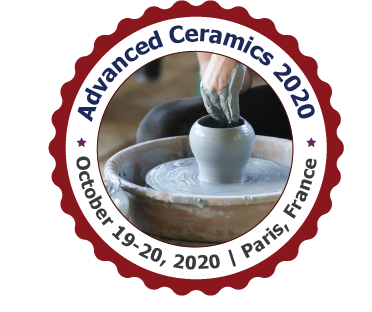International Conference and Expo on Ceramics and Composite Materials
Paris, France
Saja M. Nabat Al-Ajrash
Postdoctoral Researcher at University of Dayton
Title: Additive Manufacturing of Hybrid Silicon Carbide/Carbon Fiber Nano-composites
Biography
Biography: Saja M. Nabat Al-Ajrash
Abstract
A novel route to fabricate a hybrid ceramic matrix composite by utilizing preceramic polymers, chopped carbon nanofiber (CNF) precursors and subsequent additive manufacturing was introduced in this study. An allyl hydrido polycarbosilane (SMP-10) and 1,6-dexanediol diacrylate (HDDA) were mixed with a photo initiator to form a photo sensitive resin. The resulting resin was loaded with distinct weight percentages of polyacrylonitrile (PAN) Nano fiber. These mixtures were 3D printed followed by pyrolysis. The end objective of the pyrolysis cycle is that the plycarbosilane resin is converted into a silicon carbide matrix, with the PAN converted into reinforcing carbon nanofibers. The impact of the CNF percentages on structural and mechanical properties was investigated using scanning electron microscopy, transmission electron microscopy, and nano-indentation characterization techniques, respectively. The prepared precursor resin proved to have outstanding photo-curing properties and the ability to transform to the silicon carbide phase at temperatures as low as 850 oC. The result of this work showed that ceramic matrix composite components can be successfully fabricated using 3D printing and a specific pyrolysis cycle. The obtained ceramic hybrid composite was fully dense with nearly linear shrinkage and a shiny, smooth surface after pyrolysis. Furthermore, around 60% retained weight after pyrolysis to 1350 oC was confirmed by thermo gravimetric analysis. In terms of crystallography, the ceramic matrix composite appeared to have three coexisting phases including silicon carbide, silicon oxycarbide, and turbostratic carbon. The results are very promising to fabricate hybrid composites working at high temperatures with improved mechanical properties and complex geometries.

